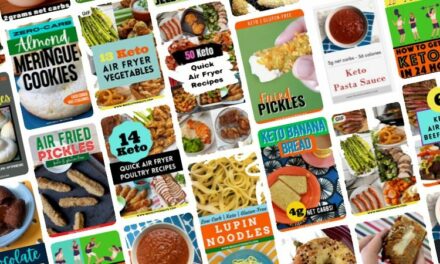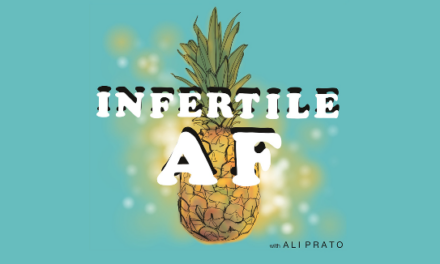In This Issue: We debate the benefits and drawbacks of posting your prices publicly. A former E! Entertainment Television employee originates a new word and a new podcast. Plus, money talk tilt, Reels world, and a last laugh.
full tilt
The Pros and Cons for Content Creators Posting Pricing and Rate Sheets
Marcus Sheridan believes in bucking a trend.
Like his competitors, the owner of River Pools and Spa encountered the same question from customers over and over: “How many arms and legs is a pool gonna cost?”
Marcus knew if he provided the answer, the contrast to his competitors would pique people’s interest. Soon after he wrote his blog post How Much Will My Fiberglass Pool Really Cost?, the link rose to the top of Google for searches on pool prices.
For content creators who sell subscriptions, courses, and merch, it’s a no-brainer to post your prices. After all, your audience expects to see those fixed prices without having to make an inquiry. But what about pricing that isn’t fixed – sponsored content, sponsorship deals, speaking engagements, consulting gigs – should you go public with that pricing?
Cons
Con 1 – Competitive advantage: I don’t want to help competitors undercut me. If Bob knows I charge $5K for a sponsored content article, then Bob may well lower his price to $4K – and then cite that lower cost when wooing a client.
Con 2 – Sticker shock: Before presenting a proposal, I want to demonstrate value. Some prospects don’t realize how much time or expertise their project requires, and because I charge a lot, I’m happy to give away a few tips.
Con 3 – Bedside manner: I want to see what the prospect will be like to work with. If I ask two questions, do they respond to only one? How quickly do they respond? Is their tone curt or chatty? Every signal informs my estimate.
Con 4 – Profit maximization: I want to see whether how sensitive the prospect is to price, so I don’t leave money on the table. If they don’t ask about budget until they have decided to work with me, I know I can quote a top-of-the-market rate.
Pros
Pro 1 – Cheapskates: You weed out prospects who can’t (or won’t) afford your services.
Pro 2 – Browsers: You identify tire kickers and freebie fishers. This cohort can be equally exasperating. For one thing, they rarely divulge their status. For another thing, browsers rarely turn into buyers.
Pro 3 – Simplification: You simplify your content business operations. Let’s face it: Trying to suss out a buyer’s wherewithal is a pain. Similarly, a rate card also simplifies things for your prospects. Sometimes, people just want the bottom line, not because they’re not cheap, but because they’re busy.
Pro 4 – Goodwill: The final benefit is perhaps the biggest – and the one that Marcus Sheridan champions: People appreciate transparency. Being upfront with your pricing creates an immediate sense the prospects can trust you – that you won’t take advantage of them.
Which pricing communication model is better? The assembly line (i.e., the public posting) or the bespoke suit (i.e., customized for each deal)? The answer depends on your business model.
If your rates are relatively low or based only on your audience numbers, then it makes sense to go forth and publish prices. What you might lose in profit margins, you might make up in volume.
If your rates are higher or your deals more complex, then it makes sense to protect your proprietary information and guide them to have a direct conversation about working with you.
– Jonathan Rick
Learn how the author decided his approach and more.
Sponsored Content
Get a Fresh Start with the Best Marketing Platform for Creators
Watch your first YouTube video. Read your first blog post. Find your first newsletter. Listen to your first podcast episode. Now, compare it to your most recent piece of content.
It’s night and day, isn’t it? You may have even felt a little (actually, maybe a lot) embarrassed. As embarrassed as you are, that’s also how proud you should be, because that’s how much your content has grown—how much you’ve grown.
If you’re like most creators, your marketing platform reminds you of that first creative effort. It has not kept up. You need a fresh start.
content entrepreneur spotlight
Entrepreneur: Raquel Kelley
Biz: Momgul
Tilt: Making motherhood easier
Primary Channel: Podcast
Other Channels: Instagram (1.3K), Where’d I Go? (book)
Time to First Dollar: Pre-launch
Rev Streams: Sponsorships (Raquel also worked other jobs until February 2022.)
Our Favorite Actionable Advice:
- Check the domain: Before Raquel went full force into her idea of Momgul (a riff on mogul), she made sure to acquire the web domain.
- Make the ask: Raquel sent an unsolicited LinkedIn message seeking sponsorship to a Quicken executive. She got the deal before the first podcast episode aired.
- Always think revenue: You need to dedicate time (or work with someone) who hunts down potential revenue streams.
– Sarah Lindenfeld Hall
Read how she got her blogging start and Suze Orman’s role in her inspiration.
things to know
Money
-
Creators, not influencers: Business-to-business brands are interested in working with creators who think like creators, not influencers. Why? They’re “renting” the trust the creator has built with their audience. (Fast Company)
Tilt Take: Makes sense. Earning and respecting your audience means you don’t treat them like a number. -
Newsletter moola: Newsletters operate to make money, and affiliate links are the way to do that. (Growth Currency)
Tilt Take: Use affiliate links smartly to ensure they fit your format and voice (and disclose that you’ll benefit financially from any sales).
Audiences
-
MrBeast DM: MrBeast has evolved into a global content creator brand, but they still value their audience. That’s why they sent a DM to someone who had been critical of one of their videos and asked what they didn’t like. (Professor Nez)
Tilt Take: One-on-one, personalized outreach can go a long way to sustain a valuable relationship. -
Money talk: A Vericast survey found 34% of Gen Z turn to TikTok for financial advice, while 33% get money tips from YouTube. (tubefilter)
Tilt Take: Anyone looking for a content tilt?
Tech and Tools
-
Ride the carousel: LinkedIn is adding a carousel post option and some tools to help you get started. If it’s available for you, it’s alongside the options under Start a post. (Social Media Today)
Tilt Take: Make sure your first image draws attention and each following one keeps people viewing. -
Reels all day: Instagram will share every video post under 15 minutes as a Reel. It also added a photo remix option, expanded remix layouts, and an add-a-clip-after-the-Reel feature. (Social Media Today)
Tilt Take: You don’t get a say in the video-turned-Reel conversion. Make the most of what’s allowed, and remember you’re never in control of your Instagram.
And Finally
-
Smile out loud: Creator of funny videos Dolly Singh’s mental health has suffered as she has been trolled and harassed about her teeth. Now, she’s smiling wide in a partnership with Colgate India. (Forbes India)
Tilt Take: Way to go, Dolly! -
Winter build: A Web3 company co-founder says the downturn can be a great time to build in the Web3 world because there is less noise and only the most dedicated continue. (Coinbase)
Tilt Take: Web3 isn’t the get-rich-quick model. Its attributes can contribute to a strong, sustainable business model.
the business of content
- To become a successful content business, our strategy must be about saying no to most everything, so we can say yes to the thing that counts. [Content Inc. podcast]
- Joe and Robert break down the latest Netflix results and the launch of their ad-supported model. [This Old Marketing podcast]
- Don’t forget to register for our mini-course The Content Creator’s Essential Guide to Contracts.
- How are your spreadsheet skills? Here’s help for entrepreneurs. (BlogHer)
- Soliciting reviews on social? Better not head into the fake zone or Amazon may sue. (Small Business Trends)
- The 411 on business accelerators. (Entrepreneur)
the tilt team
Your team for this issue: Joe Pulizzi, Pam Pulizzi, Ann Gynn, Laura Kozak, Marc Maxhimer, and Dave Anthony, with an assist from Jonathan Rick and Sarah Lindenfeld Hall.
Get more of the Full Tilt stories on TheTilt.com.
Know a content creator who’s going full tilt? DM us or email [email protected]
Want to advertise on The Tilt? Go here.
Or email us at [email protected]
Interested in the tools we use? Check out our Tilt Tech Stack here.
Was this email forwarded to you? Get your own sub here.
Copyright ©2022 Tilt Media LLC All rights reserved.
Update your preferences | Unsubscribe | 17040 Amber Drive, Cleveland, OH 44111







